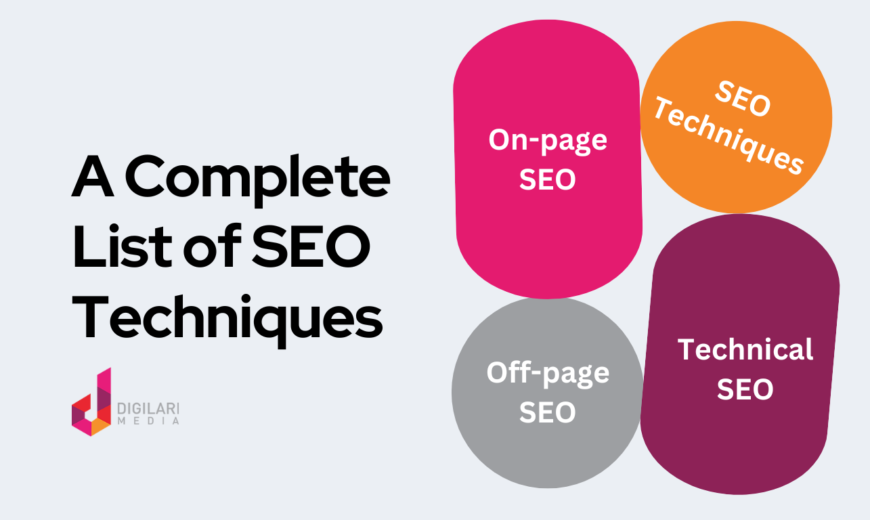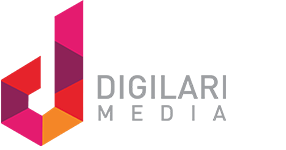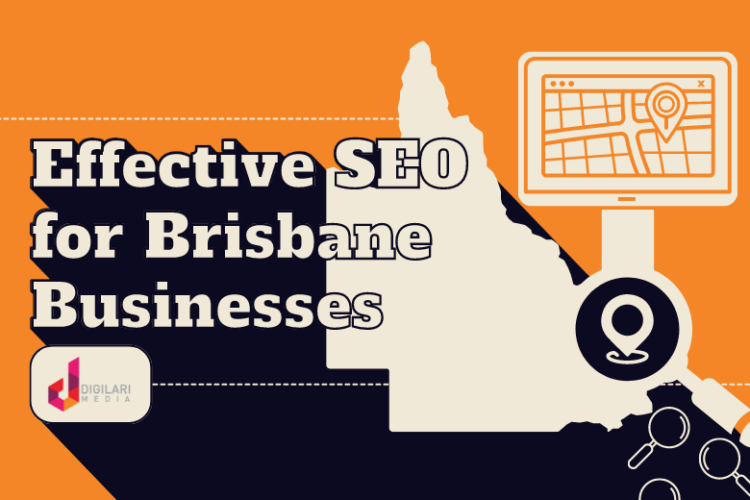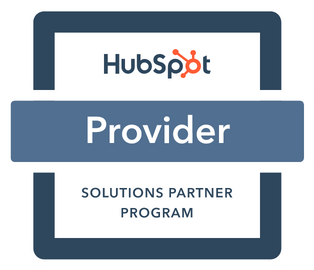
In this guide, we’ll cover the three main areas of SEO: on-page, off-page, and technical. We’ll explain what each of these areas means and why they are important for your business. Additionally, we’ll provide links to our relevant blogs on each topic, so you can dive deeper into each area if needed. By the end of this guide, you’ll have a solid understanding of SEO and how it can help your business get found online, allowing you to have more leverage and control over your online presence.
Table of Contents
What is SEO?
Search Engine Optimisation (SEO) is a set of strategies and techniques used to optimise websites for search engines, such as Google, Bing, and Yahoo. By optimising your website, you can improve your search engine rankings, increase your visibility online, and attract more targeted traffic to your site. SEO is an effective way to bring quality leads to your website, as people who are actively searching for your products or services are more likely to become your customers. Additionally, SEO can provide long-lasting results, unlike other digital marketing strategies that may produce temporary results. With the right SEO tactics in place, you can establish a strong online presence and stay ahead of your competitors in the long run.
Why is SEO important for small-medium sized businesses?
SEO allows small, local businesses to compete with larger businesses in their area. By optimising their website for local search terms, such as “best coffee shop near me,” small businesses can appear in relevant search results and attract local customers. This can be especially beneficial for businesses that rely on foot traffic, such as restaurants, retail stores, and service-based businesses.
However, many small business owners may not have the time or resources to dedicate to SEO, which is where hiring an SEO specialist or company can be helpful. By reading this guide, small business owners can gain a basic understanding of SEO and the strategies that are involved in optimising their website for search engines. This knowledge can be used to ask informed questions when hiring an SEO specialist or company, and it can also help business owners to better understand the work that is being done on their websites.
On-Page SEO
On-page SEO refers to the optimisation of individual web pages to improve their search engine ranking and drive organic traffic to a website. This involves optimising various elements on the page, including title tags, meta descriptions, header tags, content, internal links, and images. The goal of on-page SEO is to make the page more relevant and useful to both search engines and users, which can ultimately lead to higher search engine rankings and increased traffic to the website.
Keyword Research
Keyword research is a fundamental process of identifying relevant and valuable search queries that potential users typed when searching for information on search engines. Keyword research ensures that your published content is in search demand, and eventually will rank higher on results page.
You can identify key terms that drives search traffic to your site by a number of ways, such as:
Analysing competitors’ keywords: diving into which keywords already brought traffic to their sites, and come up with a list to incorporate those into your content
Using keyword research tools: find various keywords by making uses of Google Search Console, Ahrefs, Google Keyword Planner
Studying keyword search intent, keyword difficulty, search volume: narrow down which search terms are the most relevant to your content
Title Tags & Meta Descriptions
Title tags are HTML tags that specify the title of a web page. They are displayed in search engine results pages (SERPs) as the clickable headline and are important for both SEO and user experience. Meta descriptions are HTML tags that provide a brief summary of a web page’s content. They appear in SERPs below the title tag and are important for attracting clicks and improving click-through rates (CTR).
Tips for optimising meta titles and descriptions:
Include relevant keywords: Incorporate your target keywords in both the title and description in a natural and informative way. This will help search engines understand the main focus of your page and show it to users searching for those terms.
Keep it concise: Make sure your title and description are short and to the point, while still accurately representing the content of the page. Title tags should be no more than 60 characters, and meta descriptions should be no more than 155 characters.
Use action-oriented language: Use language that encourages users to take action, such as “Discover,” “Learn,” or “Find out.” This can help increase click-through rates and engagement.
Avoid duplicating content: Make sure each page on your site has a unique meta title and description that accurately reflects the content on that page. Avoid using the same title and description across multiple pages.
Make it compelling: Your meta title and description should entice users to click through to your site. Use language that is engaging and informative, while still being concise and to the point.
Content Optimisation
Content optimisation refers to the process of optimising the content on a web page to make it more relevant and valuable to both search engines and users. One of the factor is to ensure you content follows the EAT principles. You can utilise many ways to achieve that, and this includes keyword research, writing high-quality content, and formatting the content for readability.
Heading Structure
Header tags are HTML tags (H1, H2, H3, etc.) that provide structure to the content on a web page. They are important for both SEO and user experience as they help search engines understand the page’s content and improve readability for users. H2s are typically used for main headings and section titles, while H3s are used for subheadings and sub-section titles.
For example, if you have a web page about a topic that has different sections, you could use H2 tags for the main headings of each section and H3 tags for the subheadings within each section. This creates a clear hierarchy of information and helps both users and search engines understand the structure of the page.
Content Angles

Creating content based on the content angles observed on the SERPs can help you better understand what kind of information your target audience is searching for, and how they prefer to consume it.
By analysing the content angles that appear in search results for your target keywords, you can identify the topics and subtopics that your audience is interested in, and tailor your content to meet their needs. For example, if you find that search results for a particular keyword include a mix of “how-to” guides, listicles, and in-depth analyses, you can choose the content angle that would appeal most to your target audience. This is crucial for creating content that resonates with your audience and drives engagement. By focusing on the content angles that are most relevant to your target audience, you can improve the chances that your content will be shared and linked to, which can help boost your website’s authority and improve your search rankings.
Featured Snippets
As Google has updated the way information is displayed on search engine results pages, featured snippets are now more likely to appear at the top of the search results. This means that if your content is selected for a featured snippet, it has a greater chance of being noticed and engaged with by relevant searchers. Optimise your content to appear in featured snippets by providing concise answers to common questions related to your topic. Use bullet points, tables, and numbered lists to make your content more scannable and easy to read.
Multi-Media Content
When you conduct keyword research, you can gain insights into how people search for information related to your topic, and what types of content they prefer to consume. For example, if you find that the majority of search results for your target keyword are video tutorials, it suggests that users prefer to consume information in that format.
By creating content in a format that aligns with search intent and user preferences, you can improve your chances of appearing in search results, increase engagement with your content, and ultimately drive more traffic to your website.
Structured Data: Schema Markups
Cite: https://www.seobility.net/en/wiki/images/6/6d/Schema.org.png
Use structured data markup to help search engines better understand the content of your page and improve its chances of appearing in rich results such as video, recipe, or product listings.
External & Internal Linking
Internal linking is the process of linking one page of a website to another page on the same website. It helps users navigate the website and improves the website’s authority and ranking potential by spreading link equity.
Image Optimisation
Image optimisation refers to the process of optimising images on a website for search engines and users. This includes reducing file sizes, using descriptive file names and alt text, and optimising the images’ dimensions and format.
User Experience (UX)
UX refers to the overall experience that a user has when interacting with a website. It includes factors such as website speed, navigation, design, and content. UX is important for both SEO and user engagement, as it affects how users perceive and interact with a website.
Off-Page SEO
A. What is Off-Page SEO?
Off-page SEO refers to all the activities and techniques used outside of a website to improve its search engine ranking and increase its visibility. This includes link building, social media marketing, and online reputation management. The goal of off-page SEO is to increase the website’s authority, credibility, and popularity on the web, which can lead to higher search engine rankings and more organic traffic. Off-page SEO is essential for any website that wants to rank well in search engines and attract quality traffic from other relevant websites.
B. Key Elements of Off-Page SEO
Below are some key Off – Page SEO tactics that can push your domain authority and drive traffic to your site:
Link Building: acquiring backlinks from external websites to link back to pages on your website. When a page garners more backlinks from high-authority websites, it enhances its perceived authority to Google, potentially resulting in higher rankings for that page.
Social Media Marketing: the more shares the content get, the more links your content will acquire. More audience and potential customers will be reached, resulting in an increase in website traffic.
Effectively managing reviews and ratings on platforms like Google Business Profiles and Bing Places is essential for off-page SEO success. Positive feedback enhances credibility and visibility, contributing to a robust online presence.
Technical SEO
A. What is Technical SEO?
Technical SEO refers to the optimisation of a website’s technical elements to improve its search engine ranking and user experience. Technical SEO helps search engines crawl, index, and understand the content on a website more effectively, which can lead to higher search engine rankings and more traffic to the website. It is an essential part of SEO that ensures the website is technically sound and optimised for both search engines and users.
B. Key Elements of Technical SEO
Below are the basics of technical SEO:
Website Speed and Performance: improving page speed is vital since this is one of the ranking factors for both mobile and desktop
Mobile Optimisation: Google now implement mobile-first indexing, meaning that it ranks content based on mobile versions of webpages
Site Architecture: creating an effective and straightforward architecture allows crawlers to navigate within your website more efficiently
XML Sitemap: creating a file that lists all of your web pages and provides details about each page to search engines.
Robots.txt File: tell search engines where they are able and unable to go on websites
Conclusion
In conclusion, understanding the fundamentals of SEO is essential for anyone looking to make their mark online. Remember, continuous learning and application of these principles will empower you to navigate the dynamic world of SEO successfully. So, seize the knowledge you’ve acquired, adapt it to your digital endeavours, and watch your online presence flourish. Happy optimising!





